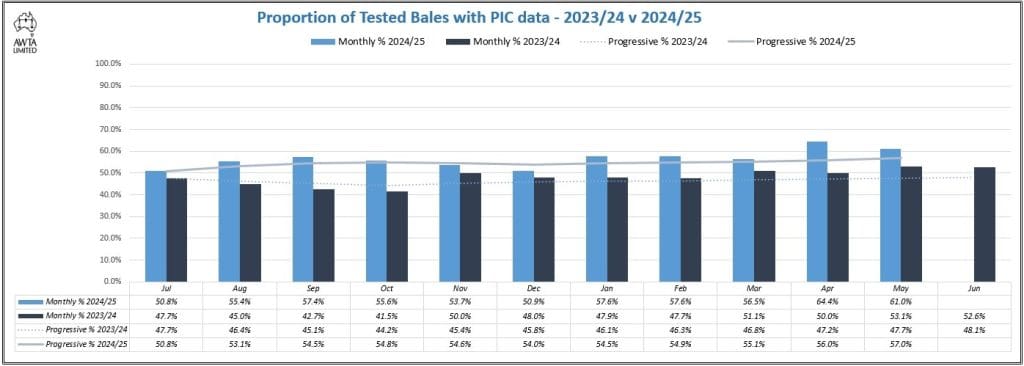
AUSTRALIAN wool sector biosecurity is set to be boosted after the industry gained permission to mandate the growers provide their Property Identification Codes with all clip test certificates.
The source identification of wool lots is fundamental to traceability via the Australian Wool Traceability Hub, and especially for management of the impacts of emergency animal disease incursions on the industry.
At the recent International Wool Testing Organisation’s 2025 Congress in France, the body’s Contracts & Specifications Committee agreed to amend core test regulations to require identification of a farm on which wool was grown.
The amendment stated that: “In the case of grower and interlots, the national committee of the country in which the test house is situated may require that a declaration is made to identify the farm(s) on which that wool was grown.”
Each IWTO national committee will decide whether or not they wish to implement the amendment, it is not mandatory, but Wool Industries Australia is expected to set an implementation date soon.
Wool Producers of Australia general manager Adam Dawes and AWTA managing director Michael Jackson delivered presentations at IWTO Congress on behalf of Wool Industries Australia that outlined the importance of AWTH and PIC collection in the context off EAD response and market access.
He said having a PIC associated with all farm-originated bales will allow Australia to trace 90 percent of the clip very efficiently and “virtually seamlessly.”
Mr Dawes said having this level of traceability would strongly support a case to go to trading partners to put in place zoning and compartmentalisation of areas in the event of an EAD incursion, to aid in restoring market access.
The Australian Wool Testing Authority Ltd has announced its strong support for the recent changes to the IWTO Core Test Regulations that now enables the mandatory declaration of Property Identification Codes for grower (farm) lots and interlots of wool tested in Australia.
This significant step, led by a submission from Wool Industries Australia (WIA), is crucial for bolstering Australia’s preparedness and response to potential emergency animal diseases, the AWTA said. The implementation plan and timeline for these changes will be announced by WIA after the committee next meets.
Currently, the AWTA holds PIC data for about 50pc of the Australian wool clip which is provided voluntarily by selling agents. However, to ensure a truly effective and swift EAD response, the industry must have over 90pc of the clip represented. WIA recognised this shortfall could only be addressed through tighter self-regulation.
AWTA Ltd managing director Michael Jackson said the industry-led initiative demonstrates a proactive commitment to biosecurity and the long-term resilience of the Australian wool industry.
“AWTA will support this change as and when determined by WIA, ensuring that IWTO Test Certificates are issued only when this mandatory farm information has been supplied, thereby supporting a more robust and secure future for Australian wool.”

HAVE YOUR SAY